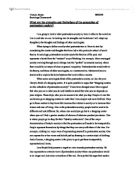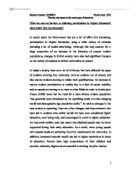“What Are Unions and What Do They Do?”
In the 20th century the workers of the world have seen a great rise in the development of the rights and practices of trade Unions. These Unions have grown in membership and have helped further the rights of workers in order to reach the level achieved today. Unions, their structure, and their practices, however, can often be unclear subjects. In the workplace, Unions control procedures such as, grievance procedure, bargaining etc. While in terms of structure, Unions may, for example, vary in the hierarchy that composes them, or in the nature of internal processes that control the Union. Through greater analysis the exact roles of the Union, it's structure, and it's practices can be revealed. A cleared picture of the essence of a union, its processes, consequences and results, will only allow for greater unionization in the future.
The roles that Unions play in today's society can be very dynamic and at times, quite complex. The benefits of Unions and unionization can be illustrated to the working public, perhaps most convincingly, through more specifically defining the roles of Unions. Unions, in a general sense, are essentially the united voice of a working population. They perform the primary task of functioning as the power source of the workers. They exist, in theory, as a result of the illusion of inequity that Marx argued endures in the workplace. Marx contended that the abundance of workers compared to jobs, and the owner's control over the means of production created inequalities in the workplace agreement.(Black 19). Unions came to exist as a method for workers to collaborate to attempt to overcome these inequalities through creating a united voice. From the socialist perspective, “Unions had as their primary purpose the struggle for improved conditions for workers in their jobs within the existing capitalist system.” (Black 21). In a more specific sense, Unions adopt several key roles and functions in helping workers. According to Black, in “Building a Better World” Unions act as an “agent of their members”, and, through collective bargaining, they set out to form a collective agreement to protect the “bread-and-butter” issues of workers.(24) Wages, benefits, working conditions, job security, and fair treatment are key issues outlined by Black.(24) Also to be considered are the issues of overtime pay, flexible hours and promotions/pay increases. Another key role adopted by Unions is to give their representatives a political voice through involvement in electoral politics. This process works by uniting the political voice of the Union through the education of the workers of the advantages or disadvantages of different governments. (Black 26) Once united, the political ideals of the Union members as a whole will carry more impact on elected officials then if the worker's remained individual. An important consideration in the roles of unions is that they are recognized as “legitimate agents of their workers” in legal terms. The practice of certification guarantees the unions the right to represent the workers in issues like the collective bargaining process. (Black 27). According to Black, “certification establishes a union as a bargaining unit”. (60) This unit forms a bargaining committee that is responsible for creating a bargaining position that the union will present to the employer. Unions also play an important role in the resolution of disputes and in grievance procedures. Through the processes of mediation and conciliation, the union works to achieve an effective solution. These processes both involve the assistance of a third party in reaching an agreement. (Black 65) Arbitration may be used as a last effort in the solving of grievances; it involves a legally binding decision made by an impartial third-party. Overall, it can be seen that the diverse set of roles and tasks played by present-day unions allows for the protection and further development of an equally diverse set of worker rights.







